What’s Up?
I and the three three-week IPT participants Anita North, Loren Waxman, and Eugen Dolan — all IPT veterans, flew from Stanley in the Falklands back to Santiago, Chile on the afternoon of Saturday January 12. Loren was flying straight through to LA on a Saturday night red-eye and then continuing on to his home in Bend Oregon. That is one long trip. Anita is flying to Toronto on Sunday morning — she should be at the gate as I type. Eugen is hanging out in Santiago for a few days for some R&R before
heading home. I grab a red-eye to Miami at 11:30pm Sunday night (yuck!) should be in Orlando a bit after 10am on Monday and then home at about lunch time. I fly on Friday to San Diego for the IPT that begins on Sunday. You gotta love it, and I do.
The four two-week folks, multiple IPT veterans Donna Bourdon and Bev Still, IPT veteran and super-helpful Tony Zielinski, and first-timer Steve Rentmeesters flew back to Stanley from Bleaker on Friday, January 4. Their FIGAS flight was delayed and thus their trip to the Murrell Farm Rockhopper colony was postponed from that Friday afternoon until Saturday morning. They left the hotel at 5:30am and were transferred to Mont Pleasant Airport for the flight to Santiago. Their persistence was rewarded with great chances on the (lost) Northern (Mosley’s) Rockhopper that continues to visit. More than 99% of Northern Rockhoppers breed on Tristan da Cunha and Gough Island in the south Atlantic Ocean. You can learn more about this species in the WikipediA account here.
As expected, and as you will see here today and in the coming weeks, the trip was a wonderful success. Everyone including me went home beyond thrilled and beyond exhausted. What was not to love? The birds were beautiful and tame, the settings wild and unspoiled, and overall the weather (including the wind!) was great. We did have a very few wind against sun sessions but always found some worthwhile situations to photograph as the penguins are not affected very much by the wind direction. The food was great — even though we prepared all of the meals on Saunders (six nights at The Neck, four at Rookery Cabin) ourselves. And best of all for me, the group got along great.
As expected, I used my 500 PF and my 80-400 VR to create well more then 95% of the images that I created; and more than 90% of those images were created hand held. I used the 600mm f/4 VR only rarely …
Note: this blog post took about three hours to prepare.
Do Check Out …
Do check out the insightful comments and my replies at the bottom of the Most Common Rear Button Focus/Focus Lock Technique Errors blog post here.
IPT Updates
If you are interested in learning about the last-second San Diego late registration discount, please get in touch immediately via e-mail. I still need three or four folks for the Galapagos trip. If you would like to explore the possibilities, please get in touch via e-mail. No reasonable offer will be turned down.
- 2019 San Diego 4 1/2-DAY BIRDS AS ART Instructional Photo-Tour (IPT) SUN JAN 20, 2019 thru and including the morning session on THURS JAN 24: 4 1/2 days: $2099. (Limit: 10/Openings: 4) Introductory Meet and Greet at 7:00pm on the evening before the IPT begins: SAT DEC 19, 2019.
- The 2019 Hooptie Deux/Roseate Spoonbill Boat 3 1/2 DAY IPT — FEB 16 thru 19, 2019: $2599.00. Limit: 5 photographers/Openings: 2.
- The New, Expanded 2019 UK Puffins, Gannets, & Red Kites IPT. Thursday June 27 (from EDI) through Tuesday, July 9, 2019 (on the ground; fly home on Wednesday July 10.): $9,999. Limit 10 photographers/Openings: 9. This trip needs four to run. Co-leader: Peter Kes.
- The GALAPAGOS Photo Cruise of a Lifetime IPT/The Complete Galapagos Photographic Experience. July 23 to August 6, 2019 on the boat. 13 FULL and two half-days of photography: $14,499. Limit: 12 photographers/Openings: 4.
BIRDS AS ART
BIRDS AS ART is registered in the U.S. Patent and Trademark Office.
Selling Your Used Photo Gear Through BIRDS AS ART
Selling your used (or like-new) photo gear through the BAA Blog is a great idea. We charge only a 5% commission. One of the more popular used gear for sale sites charged a minimum of 20%. Plus assorted fees! Yikes. They went out of business. And e-Bay fees are now up to 13%. The minimum item price here is $500 (or less for a $25 fee). If you are interested please scroll down here or shoot us an e-mail with the words Items for Sale Info Request cut and pasted into the Subject line :). Stuff that is priced fairly — I offer pricing advice to those who agree to the terms — usually sells in no time flat. Over the past year, we have sold many dozens of items. Do know that prices on some items like the EOS-1D Mark IV, the old Canon 100-400, the old 500mm, the EOS-7D and 7D Mark II and the original 400mm DO lens have been dropping steadily. You can always see the current listings by clicking here or on the Used Photo Gear tab on the orange-yellow menu bar near the top of each blog post page.
Money Saving Reminder
If you need a hot photo item that is out of stock at B&H, would enjoy free overnight shipping, and would like a $50 discount on your first purchase, click here to order and enter the coupon code BIRDSASART at checkout. If you are looking to strike a deal on Canon or Nikon gear (including the big telephotos) or on a multiple item order, contact Steve Elkins via e-mail or on his cell at (479) 381-2592 (Eastern time) and be sure to mention your BIRDSASART coupon code and use it for your online order. Steve currently has several D850s in stock along with a Nikon 600mm f/4 VR. He is taking pre-orders for the new Nikon 500 P and the Nikon Z6 mirrorless camera body.
Gear Questions and Advice
Too many folks attending BAA IPTs and dozens of photographers whom I see in the field and on BPN, are–out of ignorance–using the wrong gear especially when it comes to tripods and more especially, tripod heads… Please know that I am always glad to answer your gear questions via e-mail. Those questions might deal with systems, camera bodies, accessories, and/or lens choices and decisions.
|
|
|
This image was created on Christmas Day 2018 at The Neck on Saunders Island. I used the hand Nikon AF-S NIKKOR 500mm f/5.6E PF ED VR lens and my souped up Nikon D850. ISO 400. The exposure was set for incoming rockhopper penguins at 1/2000 sec. at f/6.3 NATURAL AUTO WB at 6:44pm on a relatively sunny day. Nikon Focus Peaking fine-tune value: +3. See the Nikon AF Fine-tune e-Guide here. Center Group (grp) AF point/Continuous (C in Nikon/AI Servo with Canon) AF was active at the moment of exposure. Though the upper AF point in the array was on the side of the gull’s breast (my bad) as originally framed, the image was sharp on the eye. Kelp Gull dropping rockhopper penguin egg |
Image #1: Kelp Gull Dropping Rockhopper Penguin Egg/Scrambled Egg for Dinner
Sometimes the stars line up perfectly in your favor. When I saw this gull flying toward me holding something in its bill, I was immediately transported back to the West Pond at Jamaica Bay Wildlife Refuge watching Herring Gulls drop quahog clams onto the trail to smash them. I recognized the behavior, raised the camera excitedly, framed and acquired focus, and fired off two quick frames. When I reviewed the fist image and saw that the egg was perfectly placed in the frame just above the distant hillside, I could barely keep from jumping up and down with joy.
The smashed egg was consumed almost instantly by the Kelp Gull and some marauding Dolphin Gulls.
|
|
|
This image was created on January 6, 2019 at Rookery Cabin on Saunders Island. I used the hand Nikon AF-S NIKKOR 80-400mm f/4.5-5.6G ED VR lens (at 260mm) and my souped up Nikon D850. ISO 500. Matrix metering at zero: 1/1600 sec. at f/8. NATURAL AUTO WB at 7:56pm on a clear day. Nikon Focus Peaking fine-tune value: +5. See the Nikon AF Fine-tune e-Guide here. Center Group (grp) AF point/Continuous (C in Nikon/AI Servo with Canon) AF was active at the moment of exposure. The array was centered on the spot where the upper and lower mandible met. I added a sliver of canvas after leveling this image with the Ruler Tool as detailed in Digital Basics II. Image #2: Black-browed Albatross yawning in golden light |
Black-browed Albatross Yawning in Golden Light
At the extensive albatross colony at Rookery Cabin — it stretches for five miles along the rugged coast — it is a bit easier to work on sun angle against distant blue water backgrounds in the late afternoon than it is in the early mornings. But with some effort, it can be done at either time. Here, with the sun just a bit above the distant hill to the north, I needed to nestle way down in the rocks with my right shoulder pressed tightly against the ground in order to keep my shadow off the subject’s head. As a result, I was holding my rig at an awkward angle. In situations like this, you must rely on the in-viewfinder level to keep the camera relatively square to the world. It is ludicrous that with Nikon bodies you cannot set the in-viewfinder level to appear whenever the camera body is on. If you turn the camera off, you need to press the button to enable this feature. With Canon you simply set it once and forget it. I will be sharing other Nikon system problems that especially affect nature photographers with you here in future blog posts.
Anyhoo (as my late-Dad used to say often), I created several nice head portraits in the golden late afternoon with killer-blue South Atlantic backgrounds. I cursed as the bird started a big yawn while its head was turned away from me. But I stuck with it while zooming out a bit and was rewarded when the bird continued its yawn while turning toward me and squaring its head to the plane of the sensor.
Your Favorite?
Which of my two favorites is your favorite? Please be sure to let us know why you made your choice.
|
|
|
From left to to right clockwise back to the center: Brown Pelican, Roseate Spoonbill downstroke, Brown Pelican sunrise silhouette, Double-crested Cormorant pre-dawn blur, Roseate Spoonbill flapping after bath, Brown Pelican taking flight, Roseate Spoonbill taking flight, Reddish Egret white morph breeding plumage in flight, and Reddish Egret dark morph breeding plumage in flight. All images on this card were created by me on the Hooptie Deux at Alafia Banks on the February 2018 trip.You can click on each card to enjoy a larger version. |
2019 Hooptie Deux/Roseate Spoonbill Boat 3 1/2 DAY IPT — FEB 16 thru 19, 2019: $2599.00. Limit: 5 photographers/Openings: 1.
3 1/2 days on the boat including four morning photo sessions and three afternoon sessions via customized pontoon boat.
Price per day Reduced from the 2018 rates! Please e-mail for details on IPT veteran and couples’ discounts. Pro-rated options may be available …
We will be leaving the dock very early for the morning sessions (weather permitting) in hopes of photographing the pre-dawn American Crow and White Ibis blast-offs. All sessions are planned for the Alafia Banks Roseate Spoonbill Rookery. We might consider other options in the unlikely event of horrific weather. There will be lots of opportunities for flight photography of several species including and especially Roseate Spoonbill. Also likely for flight photography are nesting Brown Pelican, both morphs of Reddish Egret, Great Blue Heron, Great Egret, White and Glossy Ibises, and Double Crested Cormorant. We should have some good chances with birds carrying nesting material. This IPT includes all boat and guide fees, in the field instruction, chest waders (feel free to bring your own of course to assure a perfect fit), and three working lunches on Saturday, Sunday, and Monday. For the most part we will be standing in mid-calf to knee high water behind our tripods. We help you get in and out of the boat with your gear. This is likely not the best trip for folks with mobility or balance problems. Note however that some folks opt to stay on the boat to photograph. They usually have lots of chances for flight photography of spoonbills and other species but are almost always pretty far away from the spoonbills that land.
|
|
All images on this card were created by me on the Hooptie Deux at Alafia Banks |
The Timing and Tides are Perfect!
I recently saw a similar trip advertised two months too late for breeding plumage spoonbills … The 2019 Hooptie Deux/Roseate Spoonbill Boat 3 1/2 DAY IPT represents an incredible opportunity to photograph Florida’s most wanted species. I do hope that you can join us. There will be a meet and greet at 7:00pm sharp on the evening of Friday February 15, 2019. All of the images on the card were made on the Hooptie Duex during the last two weeks of February, prime time for the spoonies in mega-breeding plumage. Many folks have written expressing interest so please do not tarry.
Please e-mail to hold your spot. Then you may either secure your spot by calling Jim or Jennifer at the office at 863-692-0906 and leaving the $500 deposit on credit card or sending your check for payment in full to us as follows with the check made out to:
BIRDS AS ART and sent here via US mail:
BIRDS AS ART
PO BOX 7245
Indian Lake Estates, FL 33855
If you call to leave your deposit you will be asked to mail your check for the balance no later than December 15, 2018.
|
Images courtesy of our guide; copyright 2017 Captain James Shadle (aka Froggie). All of the images here were created at Alafia Banks. Card creation and design by Arthur Morris/BIRDS AS ART. |
Everybody Loves Spoonbills!
Roseate Spoonbill is one of if not the most sought after avian photographic subjects in Florida. They are generally hard to find and somewhat difficult to approach. They are relatively easy to find at Alafia Banks—heck, you can’t miss seeing them, but even there they can on some days be somewhat difficult to approach. On some days we may be able to get ridiculously close to them. The huge incentive to get out to Alafia Banks in mid-February is the chance to photograph this species at the height of its spectacular breeding plumage…. with long telephoto lenses. A 500 or 600 with a 1.4X TC is perfect for this trip.
Mornings to Alafia Banks for spoonbills and Brown Pelicans (with lots of flight photography often with the birds likely carrying nesting material), Double-crested Cormorants, ibises (both Glossy and White) in breeding plumage. Some of the White Ibises may be sporting their spectacular, distended, red, naked (un-feathered) throat pouches—typically larger in the females. In addition we may get to photograph egrets including Great and Reddish, both in full breeding plumage, shorebirds, and more. There will be lots of flight photography opportunities. Afternoon trips will most likely be back to Alafia Banks for the spoonbills with an option to visit a more sheltered inland rookery location for a variety of nesting birds. In the event of horrific weather artie will either take the group to Fort DeSoto or will conduct an extensive image review/Photoshop session. This IPT includes lunches on the full days with small group image sharing and review and some over-the-shoulder Photoshop instruction.
Help Support the Blog
Please help support my efforts here on the blog by remembering to click on the logo link above each time that you shop Amazon. That would be greatly appreciated. There is no problem using your Prime account; just click on the link and log into your Prime account. With love, artie
If In Doubt …
If in doubt about using the BAA B&H affiliate link correctly, you can always start your search by clicking here. Please note that the tracking is invisible. Web orders only. Please, however, remember to shoot me your receipt via e-mail.




Please Remember to use my Affiliate Links and to Visit the New BAA Online Store 🙂
To show your appreciation for my continuing efforts here, we ask, as always, that you get in the habit of using my B&H affiliate links on the right side of the blog for all of your photo and electronics purchases. Please check the availability of all photographic accessories in the New BIRDS AS ART Online Store, especially the Mongoose M3.6 tripod head, Wimberley lens plates, Delkin flash cards and accessories, and LensCoat stuff.
As always, we sell only what I have used, have tested, and can depend on. We will not sell you junk. We know what you need to make creating great images easy and fun. And please remember that I am always glad to answer your gear questions via e-mail.
I would of course appreciate your using our B&H affiliate links for all of your major gear, video, and electronic purchases. For the photographic stuff mentioned in the paragraph above, and for everything else in the new store, we, meaning BAA, would of course greatly appreciate your business. Here is a huge thank you to the many who have been using our links on a regular basis and those who will be visiting the New BIRDS AS ART Online Store as well.
Be sure to like and follow BAA on Facebook by clicking on the logo link upper right. Tanks a stack.
Typos
In all blog posts and Bulletins, feel free to e-mail or to leave a comment regarding any typos or errors. Just be right :).

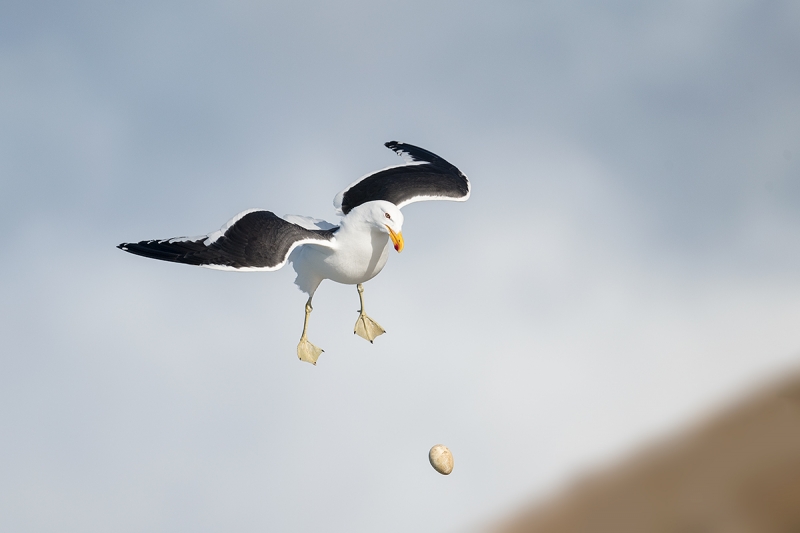
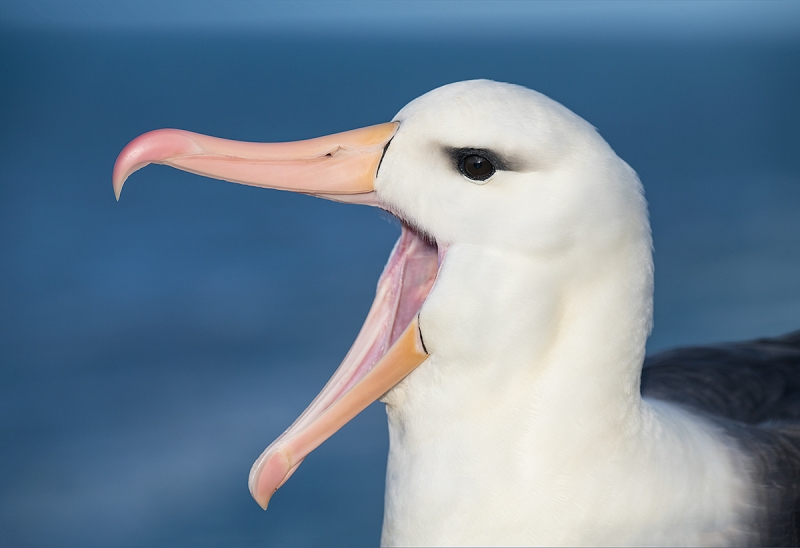
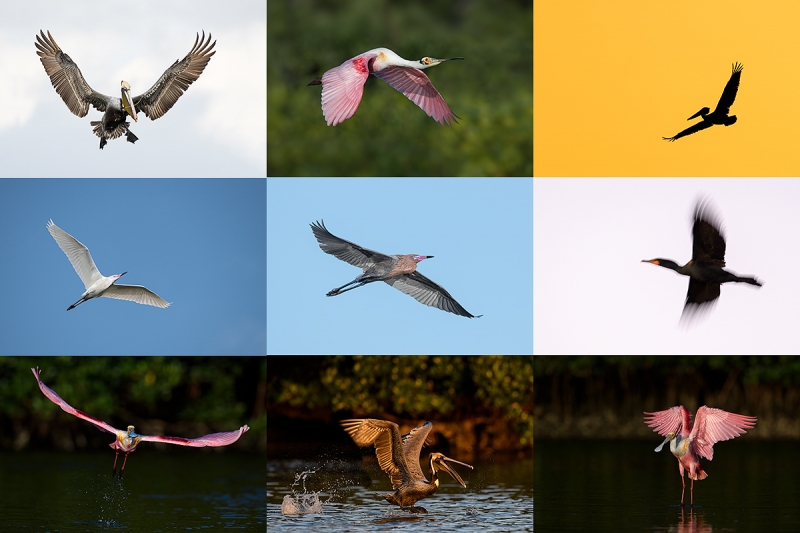
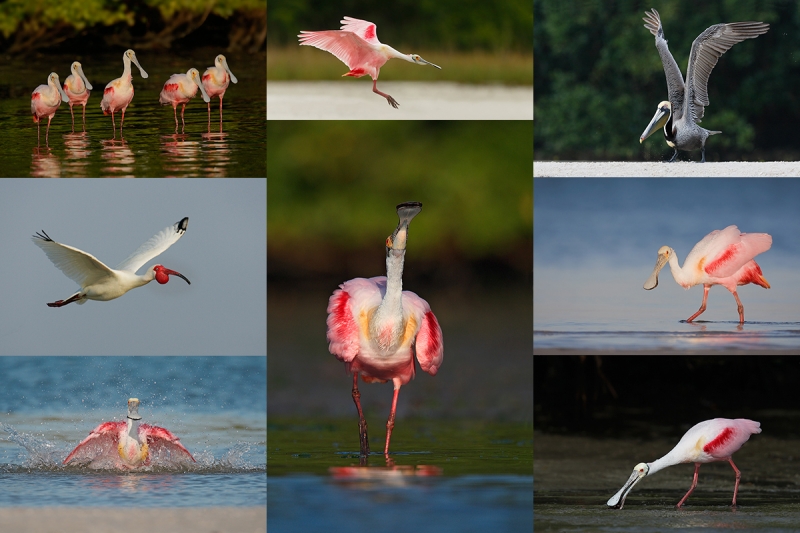
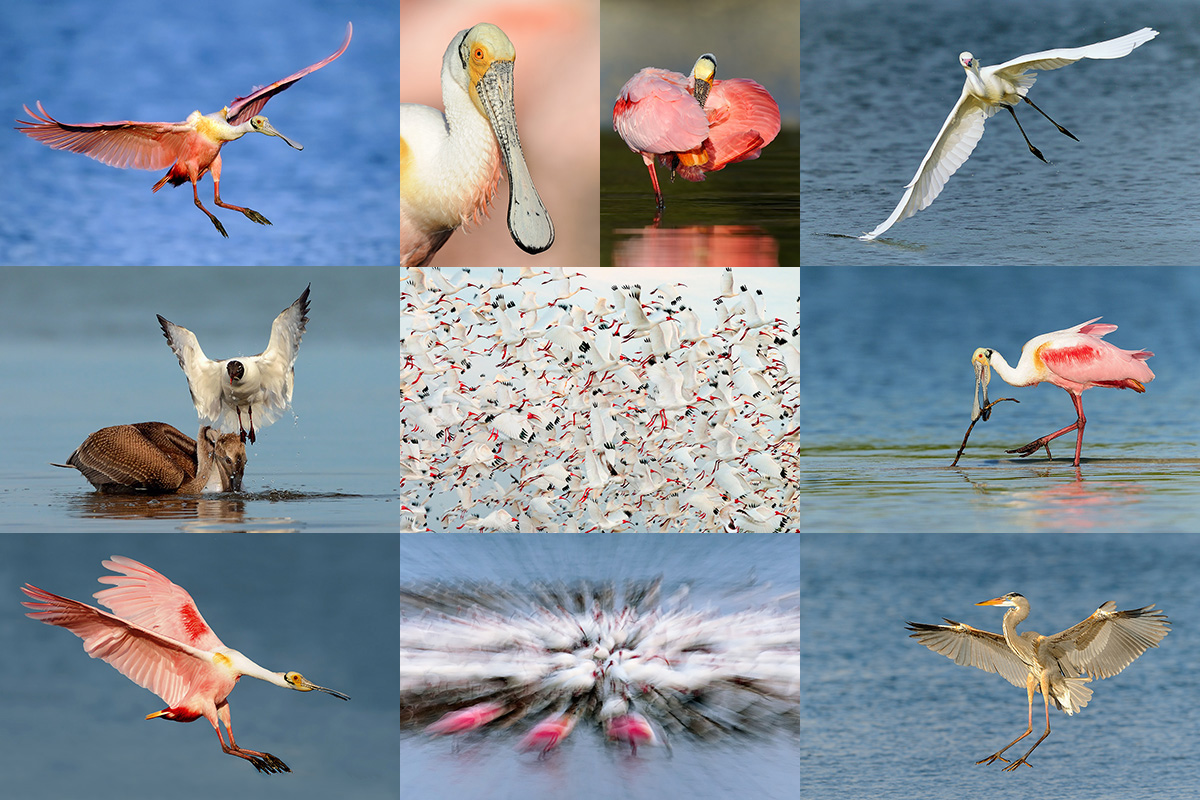













The egg-drop certainly begs for a story – very cool. Nice that the egg also caught focus pretty well. Nevertheless, I vote for the yawner, with it’s beautiful lighting and background, plus there’s just something about albatrosses.
Thanks Rob. with love, artie
ps: the gulls drop eggs and clams to get at the good stuff inside.
I like the gull-dropping-the-egg image — it’s almost Daliesque!
I like the first image a lot.
Regarding levels, you can have Viewfinder Grid Display turned on. This helps met shots level.
Custom settings, d9: Viewfinder Grid Display
Thanks Krishna, I have that set and it sticks. The level needs to stick so that you do not have to constantly hit the button to turn it on ….
with love, artie
Hi Artie!
Lovely lovely images. On my D850, I have programmed the Fn1 button to toggle the levels on and off. They appear like compensation lines along the bottom and the side. Middle both and you are level.
Thanks Neil, That is how mine is set-up. But it is insane that you cannot turn it on once and then have it stay on in the viewfinder forever as you can with Canon.
with love, artie’